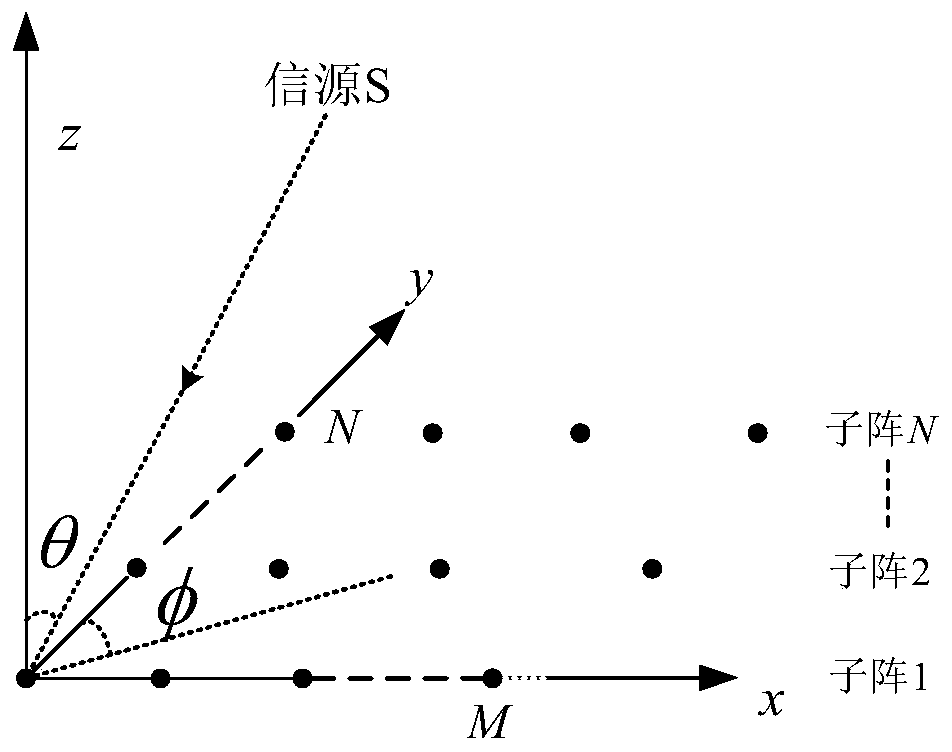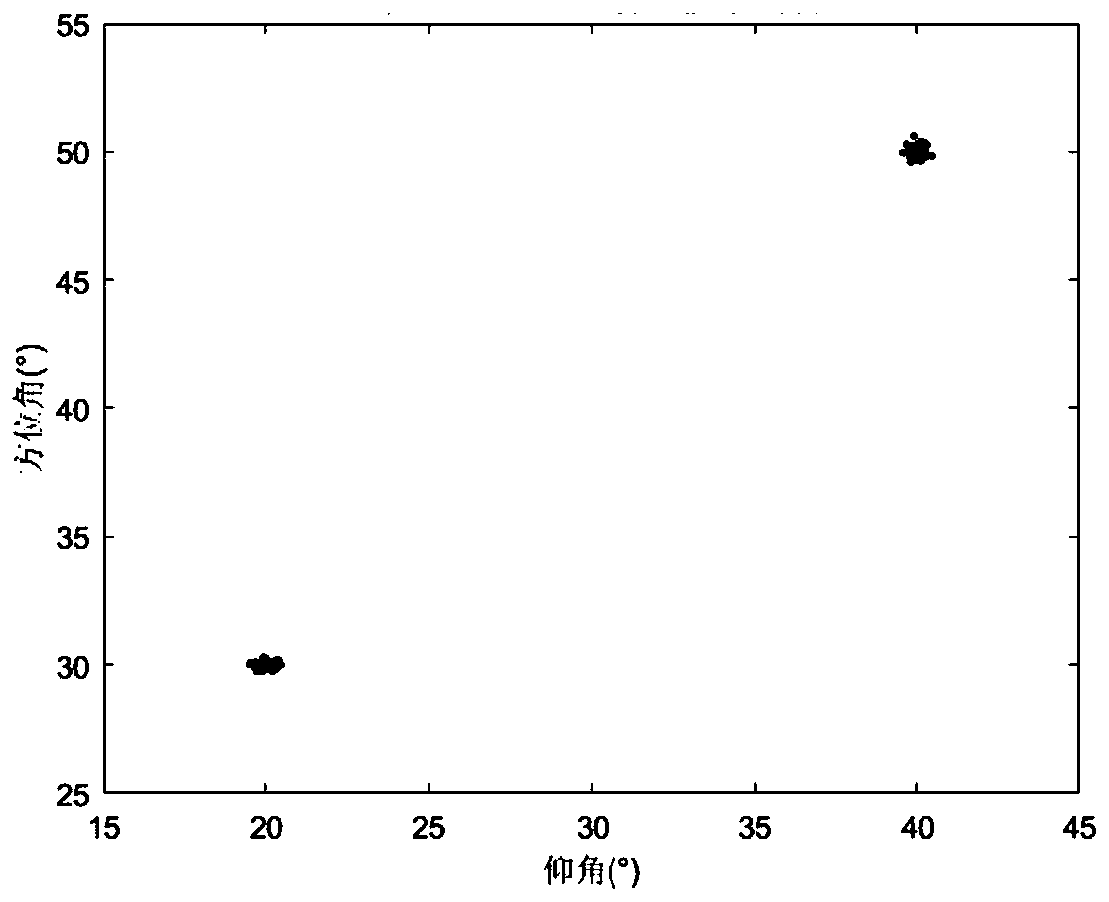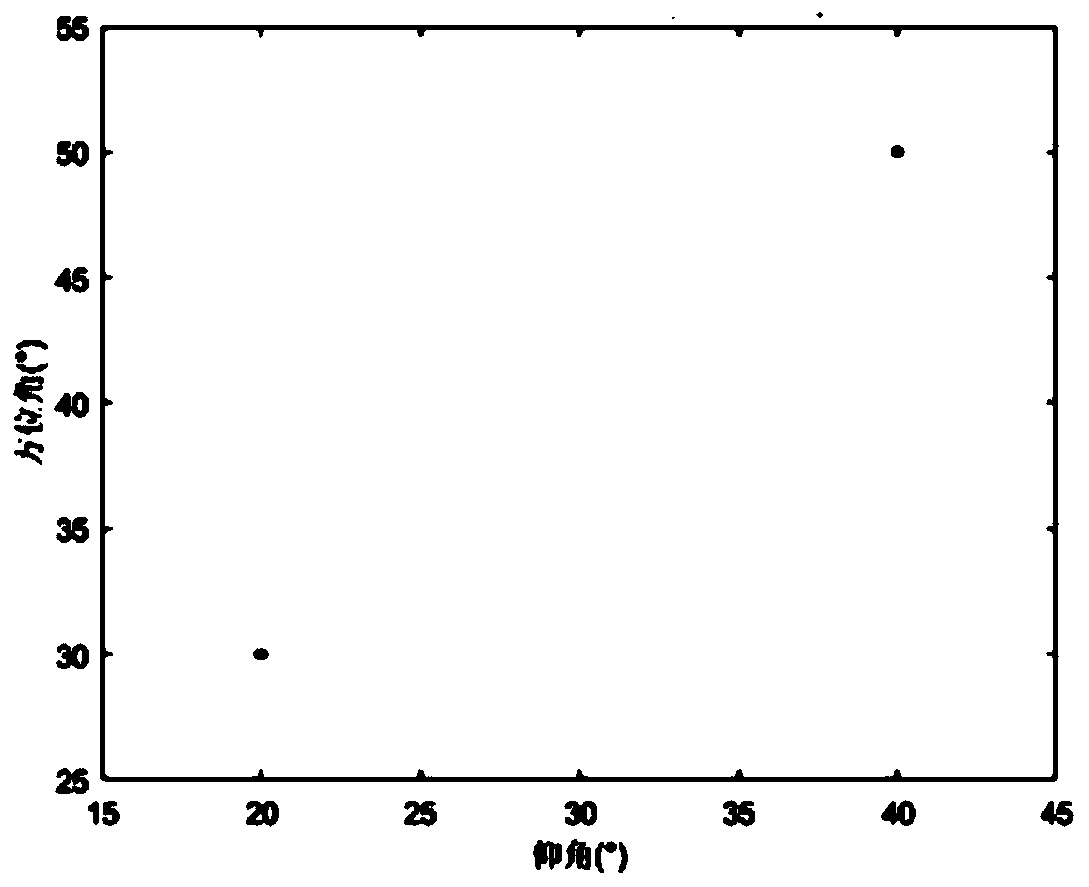Two-dimensional direction finding estimation method based on polynomial rooting in uniform area array
A technique of polynomial root finding and root polynomial finding, which is applied to direction finders using radio waves, radio wave direction/deviation determination systems, directional multi-channel systems using radio waves, etc., can solve problems such as high computational complexity, and achieve The effect of low complexity, reducing root-finding complexity and root-finding difficulty
- Summary
- Abstract
- Description
- Claims
- Application Information
AI Technical Summary
Problems solved by technology
Method used
Image
Examples
Embodiment Construction
[0056] In order to describe the technical solution disclosed in the present invention in detail, the technical solution of the present invention will be further described below in conjunction with the drawings and specific embodiments.
[0057] In the method described in the present invention, for matrix and calculation expression thereof, ( ) T ,(·) H and(·) -1 Represented as transpose, conjugate transpose and inversion, respectively. X represents a matrix, x( ) represents a vector, Represents the Kronecker product, ⊙ represents the Khatri-Rao product, Rank(·) represents the rank of the matrix, det(·) represents the value of the determinant, and angle(·) represents the phase angle of the complex number.
[0058]In order to realize signal angle parameter estimation under the condition of incoherent multi-source incidence in a uniform array, the basic idea of the two-dimensional direction finding estimation method based on polynomial root finding in a uniform array accord...
PUM
 Login to View More
Login to View More Abstract
Description
Claims
Application Information
 Login to View More
Login to View More - R&D
- Intellectual Property
- Life Sciences
- Materials
- Tech Scout
- Unparalleled Data Quality
- Higher Quality Content
- 60% Fewer Hallucinations
Browse by: Latest US Patents, China's latest patents, Technical Efficacy Thesaurus, Application Domain, Technology Topic, Popular Technical Reports.
© 2025 PatSnap. All rights reserved.Legal|Privacy policy|Modern Slavery Act Transparency Statement|Sitemap|About US| Contact US: help@patsnap.com



